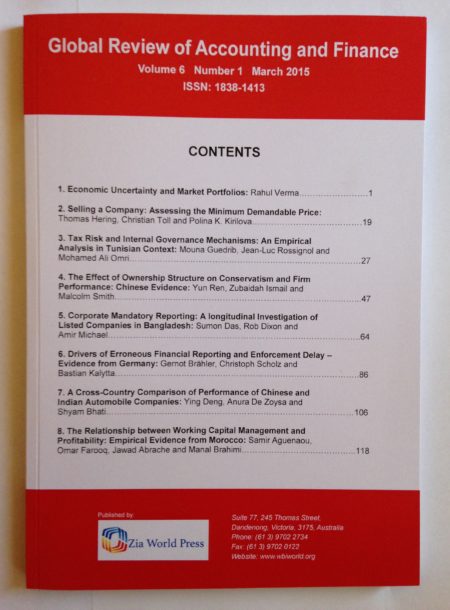Global Review of Accounting and Finance
Vol. 8. No. 1., March 2017, Pages: 104 – 114
Idiosyncratic Risk Matters: Evidence from India
Mohinder Parkash and Rajeev Singhal
For a sample of US firms, Goyal and Santa-Clara (2003) find
that the average stock variance is positively associated with
higher returns in the subsequent month. The authors interpret
the evidence as supporting the hypothesis that idiosyncratic
risk matters. Several subsequent papers employing different
methodologies present evidence conflicting with the findings of
Goyal and Santa-Clara. We adopt the approach of Goyal and
Santa-Clara in the Indian context. The results we obtain when
we measure volatility on a monthly basis do not offer support
for evidence documented in Goyal and Santa-Clara. However,
when we compute volatility over weekly intervals, we find
results consistent with those presented by Goyal and Santa-
Clara. Our results in the Indian context are in line with the
generally supportive evidence obtained using international data
about the positive relationship between conditional volatilities
and expected returns with an important difference. Supporting
the arguments of Andersen, Bollerslev, Diebold, and Labys
(2003), our results suggest that higher frequency data is more
powerful in predicting future volatilities.
DOI :
https://doi.org/10.21102/graf.2017.03.81.09

